St. Louis, Mo., Feb 26, 2023 / 04:00 am
Earlier this month, Pope Francis became the first pope — indeed, the first Western leader — to visit South Sudan. Amid an enthusiastic welcome, more than 100,000 people attended his papal Mass Feb. 5 in the capital city of Juba, during which the pope made an impassioned plea for peace in the war-torn nation.
For workers at a relief agency that has supplied aid to the people of South Sudan for 25 years, the pope’s visit was a galvanizing event that shed an international spotlight on a beloved but severely ailing country — the most dangerous country in the world for aid workers, according to the U.N.
“There are times when you’re working in South Sudan where it just feels like you are living on another planet, or working on another planet; the challenges are just so drastically different than what people in the West conceive of,” said Matt Smith, vice president of strategic partnerships and development at the Washington, D.C.-based Sudan Relief Fund.
“And so having the pope go, and seeing major news publications talking about what’s happening in South Sudan, and the pope bringing attention to the plight of the people was really important and valuable, I think, for our work,” Smith told CNA in an interview.
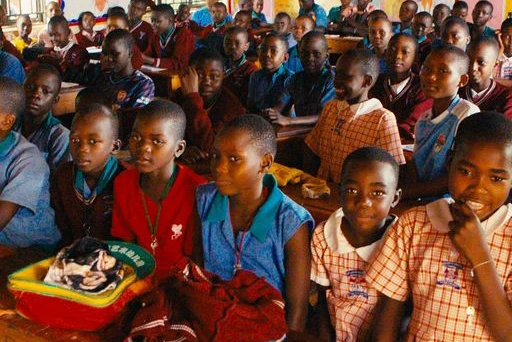
South Sudan gained independence from Sudan in 2011, making it the world’s newest country. Amid a series of civil wars, it is also one of the least-developed and poorest places in the world. In short, Smith said, there is almost no better place on earth to encounter and aid the proverbial “least of these” described in the Gospel of Matthew.
Landlocked and slightly smaller than Texas, South Sudan consistently ranks near the very bottom on the list of most developed countries, and there exists widespread corruption among civil leaders, which leads to desperation on the part of its people. Despite the rich agricultural potential of the region, widespread famine is expected to strike the country this year amid drought and a recent cutback in food aid from the World Food Programme. Paired with the highest maternal mortality rate in the world, life expectancy in South Sudan is a mere 59 years.
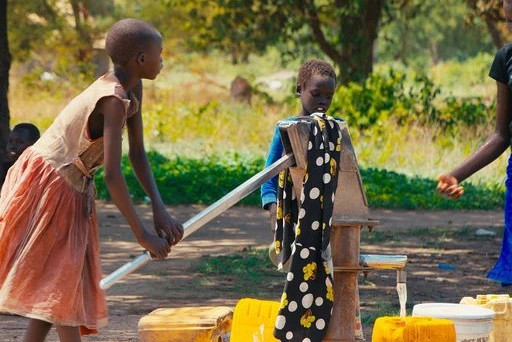
Since Sudan Relief Fund (SRF) began operations in 1998, its goal has been the provision of immediate humanitarian relief — such as food and medicine — while also keeping an eye on the future, Smith said, working to develop institutions of civil society that promote long-term stability, such as medical and vocational training. The nonprofit provided more than $5 million in aid in 2021, according to its most recent annual report.
Among numerous other projects, the organization founded a hospital, “Mother of Mercy,” in the Nuba Mountains. It also built and continues to support the Catholic University of South Sudan, the only Catholic university in South Sudan — as of 2021 — still functioning and graduating students.
SRF also supports a vocational training school in the region of Western Equatoria, deep in the jungle on the border with Central Africa Republic and the Congo. The center was founded by a priest, Father Avelino Bassols, who started a vocational training center for internally displaced people (IDPs). There the priest trains the IDPs in skills such as carpentry and mechanics.
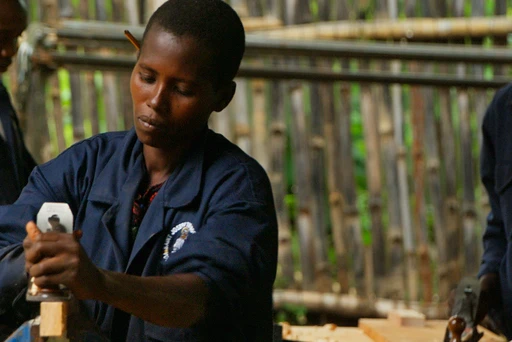
Smith said South Sudanese people who leave the country to study abroad — many doing so on scholarships provided by SRF — often come back, which he views as a sign that the South Sudanese people broadly want to improve their home country rather than abandon it.
“We see a positive future and I see it in the faces of those whom we’ve helped,” Smith said.
About 60% of South Sudan’s population is Christian, with Catholics making up at least half of those — South Sudan’s independence from Muslim-ruled Sudan opened the door for the Church to freely operate throughout the country. After the region was first evangelized as early as the sixth century, Christianity experienced extraordinary growth in South Sudan between 1901 and 1964 thanks to missionary activity undertaken by the Comboni Missionaries of the Heart of Jesus and the Missionary Sisters Pie Madri della Nigrizia.
(Story continues below)
In their relief work, Sudan Relief Fund’s main partner is the local Catholic Church, Smith said. Church leaders in four dioceses in South Sudan, as well as the Sudan Catholic Bishops’ Conference, are able to act as effective, credible partners to deliver aid dollars where they are most needed.
“That allows us to have an ear on the ground of what the needs are as they arise and respond quickly and efficiently to them. So if a priest comes to us and says, ‘We’ve just had a number of folks displaced due to conflict that’s arisen in this part of the country,’ we can respond very quickly and efficiently to that. And so we pride ourselves again on being nimble and being able to be very targeted and effective in our work,” Smith said.
Working in concert with the Catholic Church in this way makes Sudan Relief Fund similar to charities that assist persecuted Christians in the Middle East. Church leaders tend to be “very in tune with the needs of the people, and they have relationships with the people,” Smith noted.
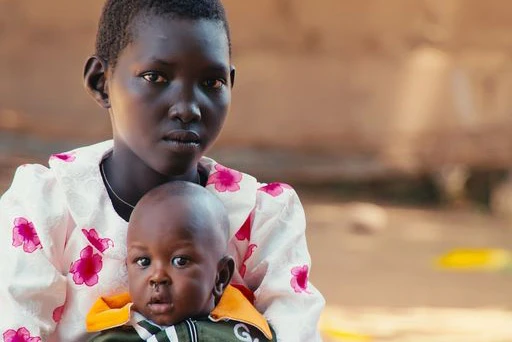
Still, serious logistical challenges to delivering aid remain, many due to a widespread lack of infrastructure in the country and the continued threat of war in many areas. After devastating civil wars from 1955-1972 and 1983-2005, fighting began again in 2013 following the country’s 2011 independence. Both sides have been accused of serious atrocities over the course of the conflict, including the raping of women, the killing of civilians, and the recruitment of child soldiers.
A number of peace agreements and cease-fires — including several mediated by the Catholic lay group Sant’Egidio — have not led to substantial peace progress. Hundreds of thousands of people have died amid the fighting, which has a strong component of ethnic tension.
South Sudan has the largest refugee crisis in Africa, with 2 million IDPs due to conflict, insecurity, and environmental challenges, the U.N. Refugee Agency reported. Thousands of homeless children, most orphaned by the war, roam the streets of South Sudan’s major cities. There are also more than 2 million South Sudanese refugees living in neighboring countries.
Despite massive social and personal difficulties, many of the people Smith has met in his travels to South Sudan are able to cultivate a joyful life. One woman whom Smith met last summer, living in a leper colony in South Sudan, had lost all her digits except for one, and yet was still able to sew beautiful garments and rugs. Smith said the woman’s sense of joy, despite her ordeal, was inspiring to him.
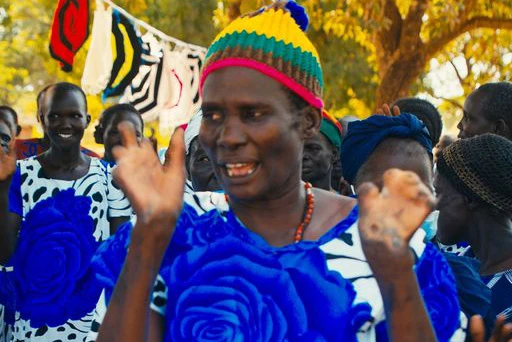
“From an outside perspective, it's easy to get discouraged when we talk about the political corruption or the incredible needs that are present. But when you go, what you find is that the South Sudanese are an incredibly proud people. They are hardworking. They want a good future for their country. And at some level, for someone like myself, it’s convicting, it’s spiritually convicting at times,” Smith continued.
“While it’s easy to look at a broad perspective and be discouraged, you can’t help but feel the joy and the gratefulness of the people as well when you are on the ground there.”
‘An encounter that I’ll cherish for the rest of my life’
Ahead of the pope’s three-day visit, there was a “level of excitement and buzz that was unparalleled” in South Sudan, Smith said. The octogenarian Francis, who has suffered significant health and mobility problems of late, had spoken about the possibility of the trip as early as 2017, fewer than four years after the outbreak of civil war in 2013. The pope’s trip was scheduled to take place last year but was postponed for six months because of Francis’ health.
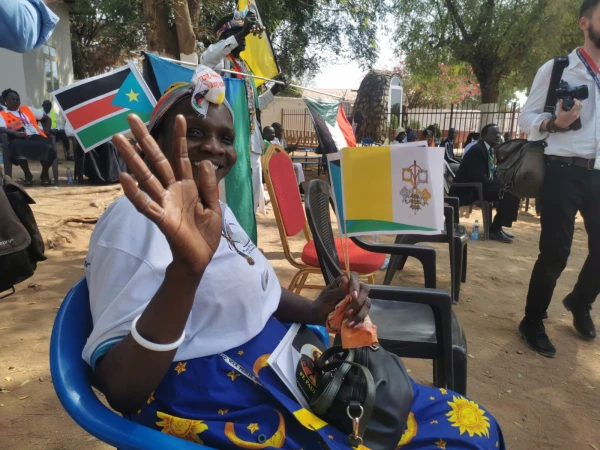
“The Christians in South Sudan have been anticipating this for so long, and they were expecting a lot for the pope’s visit,” Smith said. “To see the pope go, despite his health, was, I think, a remarkable showing of solidarity.”
Thousands of people in South Sudan turned out to see the pope. As part of his visit, he met with roughly 2,500 South Sudanese refugees at Freedom Hall in Juba.
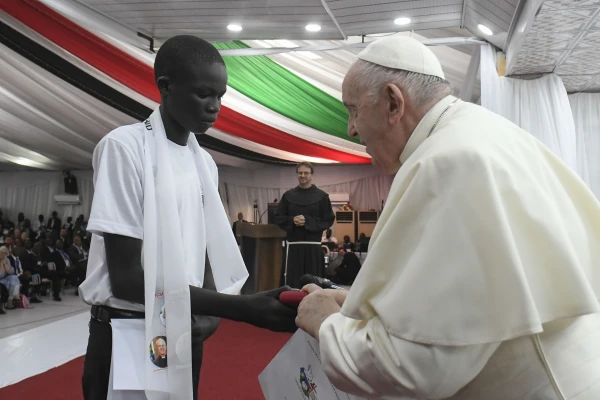
Fred Otieno, Sudan Relief Fund’s program coordinator, was afforded the opportunity to meet Pope Francis during the pontiff’s visit and spoke with him about the relief fund’s work.
“It was an encounter that I’ll cherish for the rest of my life,” Otieno told CNA.
“I had the opportunity to share with him about the work Sudan Relief Fund is doing to meet both the physical and spiritual needs of the people … It’s evident that the Holy Father cares deeply about the people of South Sudan, and he stands in solidarity with those suffering. His visit was a significant step in bringing lasting peace to a wounded country.”
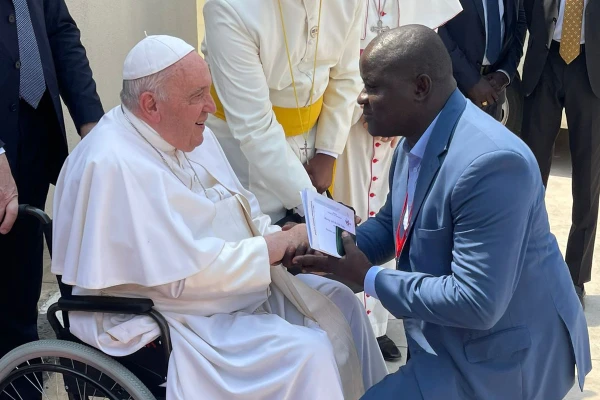
For people of goodwill who feel moved to support the Sudan Relief Fund, Smith noted that a relatively small amount of financial support — going toward something as affordable as penicillin for the leper colony, for example — goes a long way in South Sudan.
“Someone might say, ‘Well, what good is my $25 or my $10?’ But that could change a life in South Sudan,” he said.
And of course, the many prayers offered for the South Sudanese people have made a huge difference.
“One thing that without fail, in every location that I traveled in South Sudan, the Christian community was grateful for the prayers that those in the west have provided for them,” Smith said. “And they also wanted people in the West to know that they were praying for them. These are very just, selfless, giving, hardworking people. It’s remarkable that there’s still an eye or a sense of duty towards the other, even in their suffering.”






